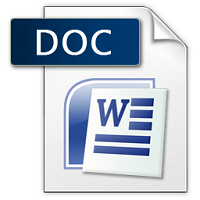₹198.00
Scroll down for Match your questions with Sample
Note- Students need to make Changes before uploading for Avoid similarity issue in turnitin.
Another Option
UNIQUE ASSIGNMENT
0-20% Similarity in turnitin
Price is 700 per assignment
Unique assignment buy via WhatsApp 8755555879
Description
SESSION AUG-SEP’23
PROGRAM MASTER OF BUSINESS ADMINISTRATION (MBA)
SEMESTER IV
COURSE CODE & NAME DITF401- E-COMMERCE
Assignment Set – 1
Questions
- A). Discuss the different features of e-commerce.
Ans: Let us briefly discuss the features of e-commerce, as shown in Fig.:-
- Virtual Existence: It is always easy for merchants to set up virtual store for selling goods and services than developing a bricks and mortar store.
Through e-commerce, one can develop websites and use social media, e-mails, etc. to conduct business activities. Any type of product or service can be put on sale through e-commerce.
- Availability
Its Half solved only
Buy Complete from our online store
https://smuassignment.in/online-store/
MUJ Fully solved assignment available for session SEPT 2023.
Lowest price guarantee with quality.
Charges INR 198 only per assignment. For more information you can get via mail or Whats app also
Mail id is aapkieducation@gmail.com
Our website www.smuassignment.in
After mail, we will reply you instant or maximum
1 hour.
Otherwise you can also contact on our
whatsapp no 8791490301.
B). Discuss any three factors that have influenced the use of e-commerce for business operations in India.
Ans:Through e-commerce, business organizations aim to bring substantial reduction in costs of business operations and improvement in their profit margins. In India, there has been dramatic progress in e-commerce over the last
- A). Define protocol. Explain IP address.
Ans: Protocol: In a general sense, a protocol is a set of rules or guidelines that dictate how something should be done. It is a standard that ensures consistency and facilitates communication or interaction between different systems or entities. Protocols are widely used in various fields, including networking, communication, security, and medicine.
The rules specified by a protocol define the format, timing, sequencing, and error checking for the
B). Explain the types of web servers.
Ans:
- A). What do you understand by e-business? Explain.
Ans:e-Business or electronic business refers to the deployment of the internet to perform business activities and processes and enhance e-commerce, organizational communication and associations with employees, customers, vendors, and other stakeholders. Thus, it
B). Describe the stages of ESLC.
Ans:The stages of ESLC:-
Assignment Set – 2
Questions
- A). How can a Trojan horse affect a client’s machine?
Ans:Trojan horse can be defined as a program which is hidden behind another program and conduct malicious functions. It could be an email attachment or a free download file. Once a user clicks it, the malware hidden inside gets onto the user’s computer and performs the intended functions it is
(B). Discuss the benefits of DRP.
Ans:The main benefits of DRPs are:
- Reduce costs – The longer business operations remain suspended, greater the financial losses can be. DRPs with measures for regular hardware and software updates could help a business organization
- (A). Discuss the features of e-payment systems.
Ans:The key features of e-payment systems are:
- Anonymity: The payment system should provide anonymity of transactions and a third party should not be able to trace any details related to the transaction.
- Security: The payment method should offer security of transaction. It should be able to exclude all kinds of fraudulent
(B). Discuss the steps involved in the functioning of EDI.
Ans:There prevail four steps that describe the functioning of EDI.
Step 1: Preparing documents to be sent the first step focuses on gathering and arranging data. For instance, rather than printing purchase orders, enterprise systems create electronic files along with essential information for building
- (A). Describe the objectives of creating an e-commerce website.
Ans:According to Howcroft and Carroll, “any methodology used for website development must be generic and flexible enough to account for the uniqueness and individuality of websites, yet concise enough to achieve the task of development.”
Business organizations face the challenging task to create a website with continuous growth and the rapid changes in
(B). Enumerate the importance of e-marketing.
Ans:The important advantages of e-marketing are as follows:
- Provides a wide choice to customers from online stores in the country and across the globe. E-marketing has given opportunities to people for buying goods online located in any part of the world.
- E-


